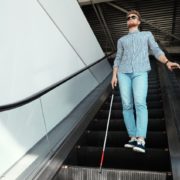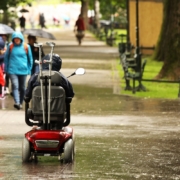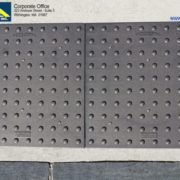Do Apartments Have to Be ADA Compliant?
Dwelling units do not have to be compliant with Americans with Disabilities Act (ADA) accessibility standards. While apartments and rental properties are included in requirements to provide equal opportunity for access, it is the public spaces around them that apply. In fact, there is no such thing as an ADA unit.
Accessible units are covered under other regulations, yet apartment buildings must comply with ADA standards. For an apartment building or complex to be ADA compliant, the following must be considered:
- Common Areas: Recreation areas, rental offices, and on-site gathering spaces and convenience stores must be designed to comply with Title III of the ADA Standards of Accessible Design. If common areas are only used by residents and their guests, they must instead be built in accordance with the Fair Housing Act (FHA).
- Elevators: While the ADA covers accessible hallway signals, elevator car dimensional requirements, braille hoistway signs, and accessible controls—as well as push button and visual/tactile two-way emergency communication—the FHA sets a standard for one or more elevators to be accessible in any building.
- Building Amenities: The ADA sets dimensional requirements for drinking fountains, so individuals in wheelchairs can reach the spouts, as well as controls and other parts of vending machines that contain food, snacks, or beverages. Laundry room equipment must include means for visually impaired persons to communicate and receive assistance, while visual indicators must be present for the hearing impaired.
Regulations that Apply to Apartment Units
While the units in your building may not need to meet ADA requirements, laws that do apply include:
FHA
Applies to all “covered multifamily dwellings” first occupied after March 13, 1991. Buildings with four or more dwelling units, and at least one elevator, must be accessible. These include single-family homes with multiple dwellings, buildings with four or more sleeping rooms where a kitchen or toilet is shared, carriage houses level on accessible routes, townhouses, and units with a loft or raised/sunken living room.

ADA apartment modifications on the ground floor must be completed for large buildings that don’t have elevators.
Rehabilitation Act of 1973
Section 504, which went into effect in 1982, applies to newly built, government subsidized Rural Development properties. It was expanded to U.S. Department of Housing and Urban Development (HUD) properties in 1988. Properties built before these went into effect don’t need to meet requirements, such as having 5% of units being fully accessible and 2% of apartments accommodating hearing and visually impaired persons. That is, unless the building undergoes an extensive renovation.
The Fair Housing Amendments Act of 1988 (FHAA)
The FHAA added new federally protected classes—disability and familial status. It also requires buildings with ground-floor units and those with in-unit elevators to incorporate seven design features. These include accessible entryways, public use areas, usable doors, access to and through the unit, and electrical outlets, light switches, and thermostats that can be reached by someone using a wheelchair. The FHAA also requires grab bars and other reinforcements on walls, as well as accessible kitchens and bathrooms.
What Is an Adaptable Unit?
The seven features outlined by the FHAA allow a unit to be quickly adapted to accommodate the needs of a person with a physical disability. An adaptable unit must have walls reinforced to accommodate grab bars if needed. This differs from fully accessible units that already have grab bars permanently installed. Townhouses or units with living spaces on multiple levels aren’t covered, unless they have an elevator.
Do Landlords Need to Be ADA Compliant?

Under the ADA, landlords are required to make “reasonable accommodations” for a renter with a physical disability. These enable the individual to access, use, and enjoy their home or common spaces on the property. Examples of modifications include installing grab bars in baths, widening doorways, and fitting a threshold with a ramp.
While inquiring about a disability on a rental application isn’t permitted, the landlord can ask for proof once a tenant requests accommodations after signing their lease. This ensures the request will provide the functionality the tenant needs.
A landlord or another housing provider is required by law to make such accommodations. The only exception is if making the appropriate changes would impose an undue financial burden.

When to Use Detectable Warning Tiles
The ADA requires detectable warning surfaces to be installed in areas that serve the public. Contrasting colors and raised domes provide a warning that a pedestrian is near a transition between a safe walking path and some type of hazard, whether it is a change in height or oncoming vehicular traffic.
If your property includes curb ramps and public stairwells, for example, detectable warnings are required. At ADA Solutions, we supply numerous tactile warning products, including cast-in-place and surface applied tiles. Request a free quote or call 800-372-0519 for more information today.











